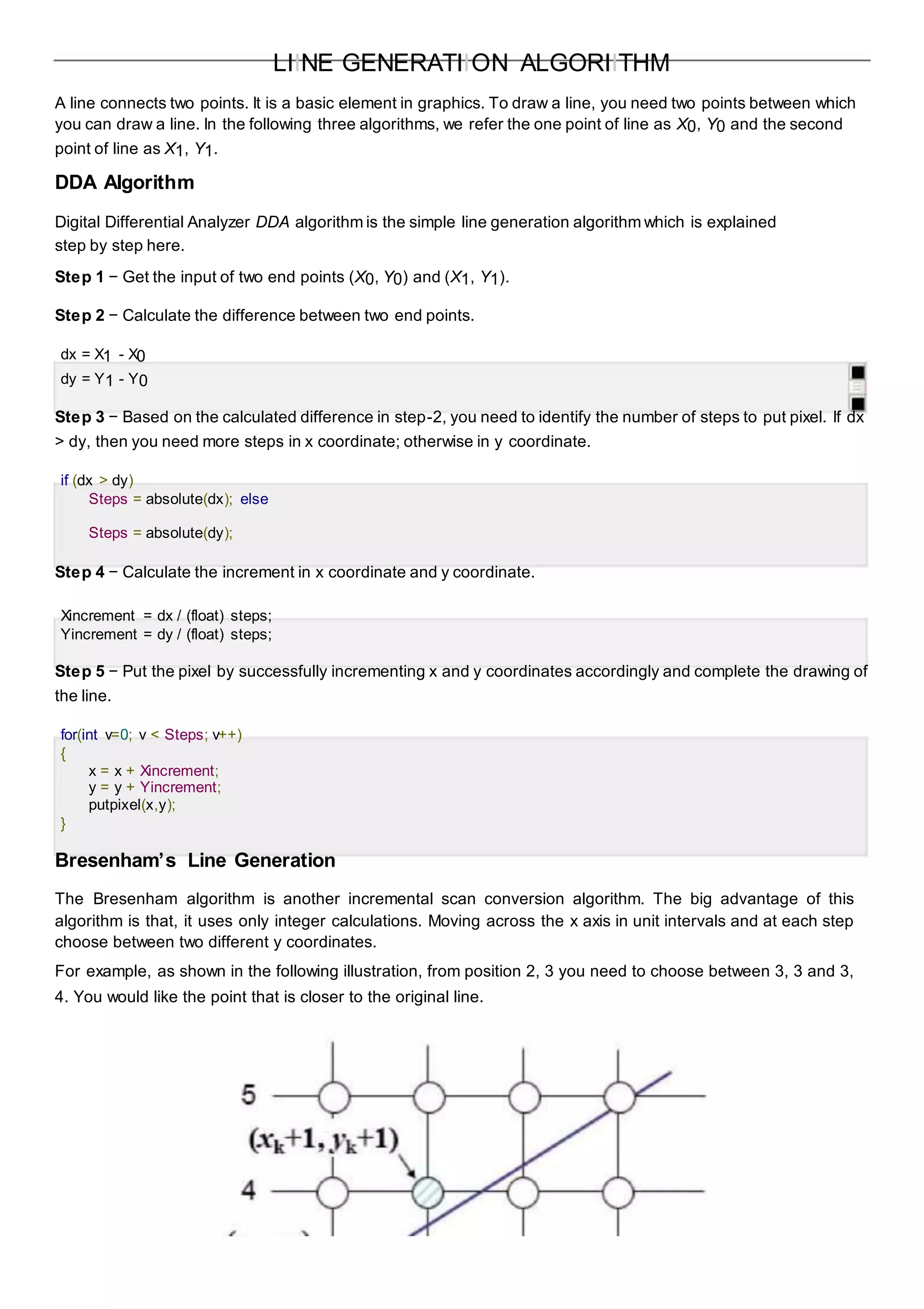The document discusses three algorithms for line generation in computer graphics: 1. The DDA algorithm calculates increments in x and y coordinates between two endpoints and plots pixels along the line incrementally. 2. Bresenham's algorithm uses integer calculations and chooses pixel coordinates closest to the true line by comparing differences above and below the line. 3. The mid-point algorithm calculates the midpoint between potential next points and chooses the one closest to the true line based on whether the intersection is above or below the midpoint.



